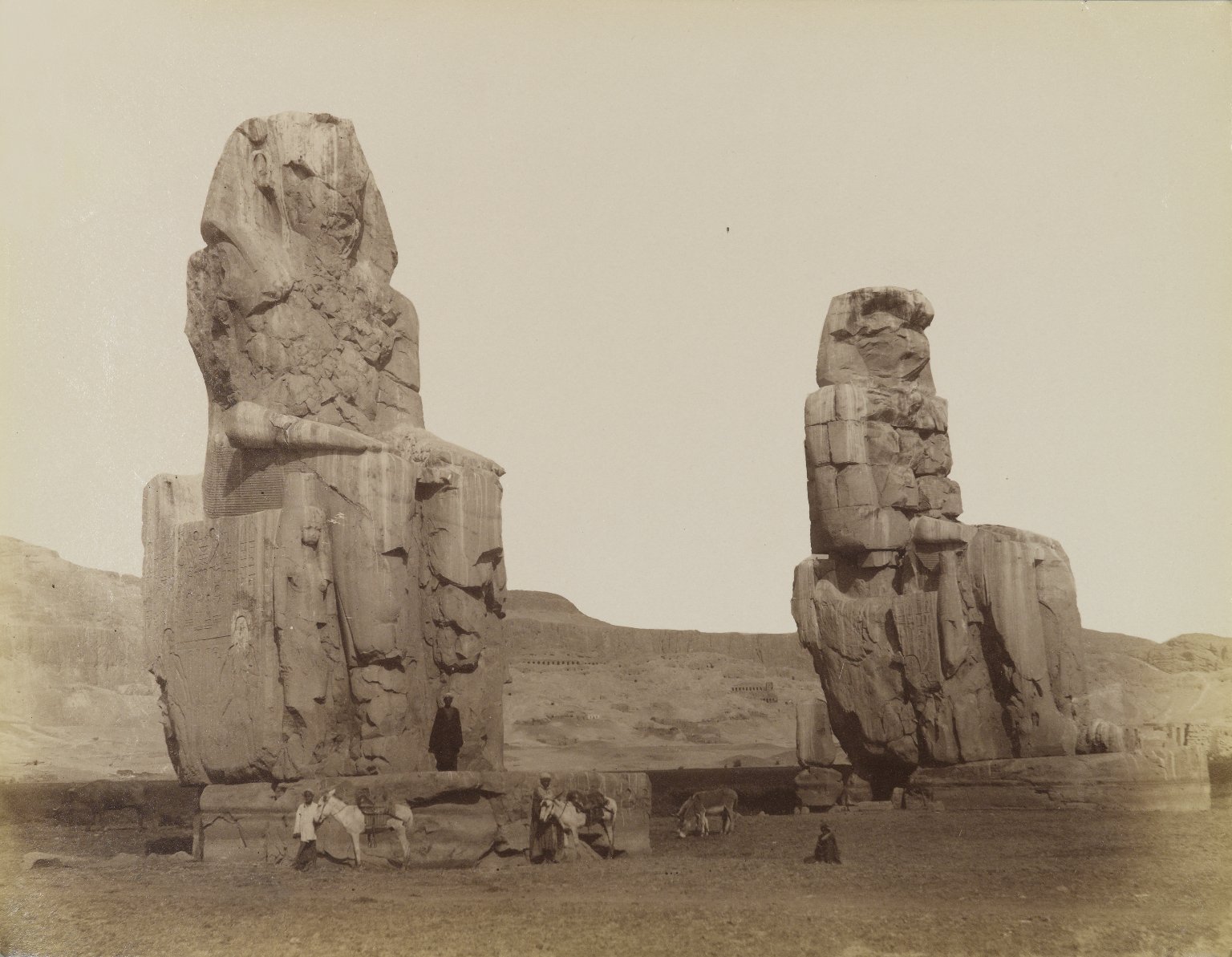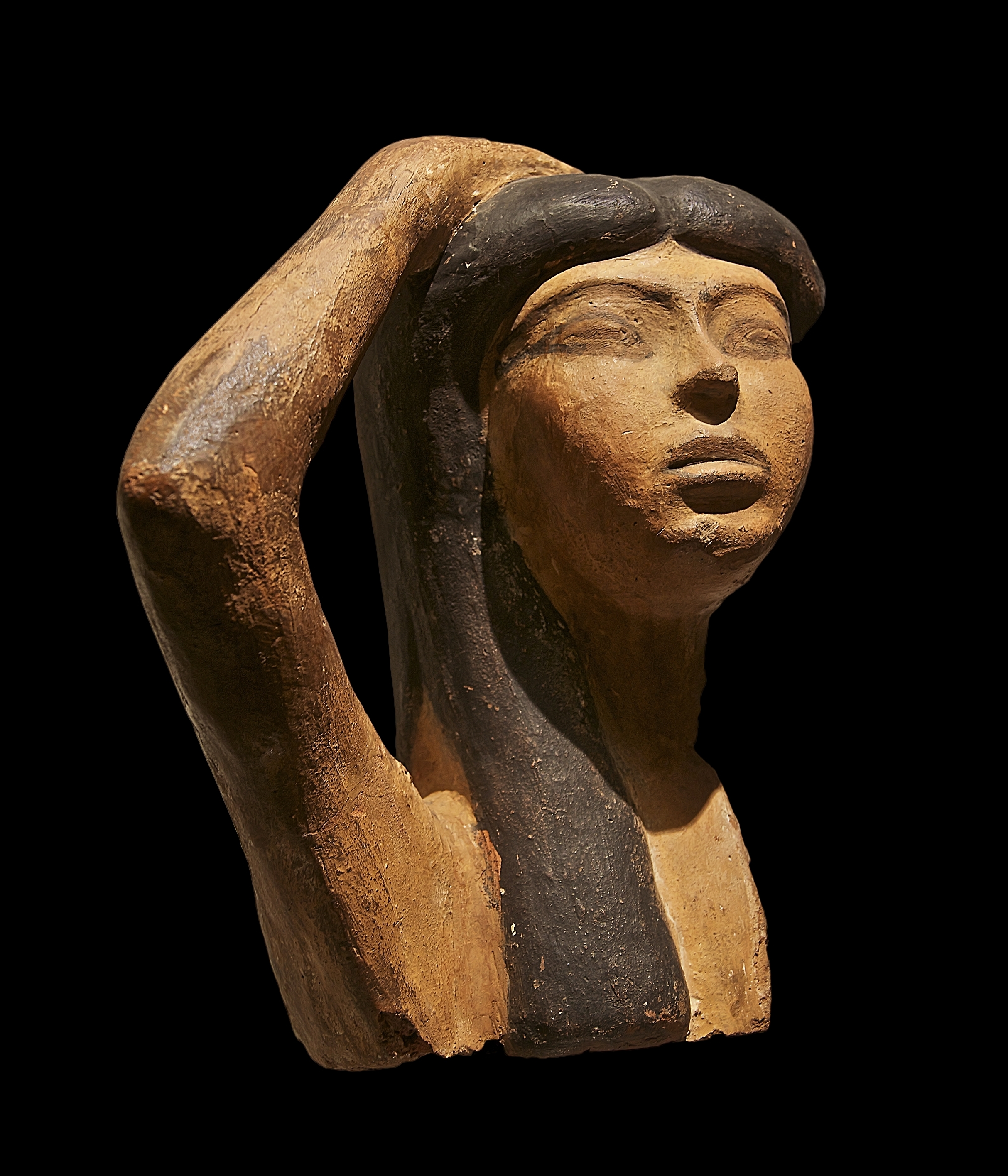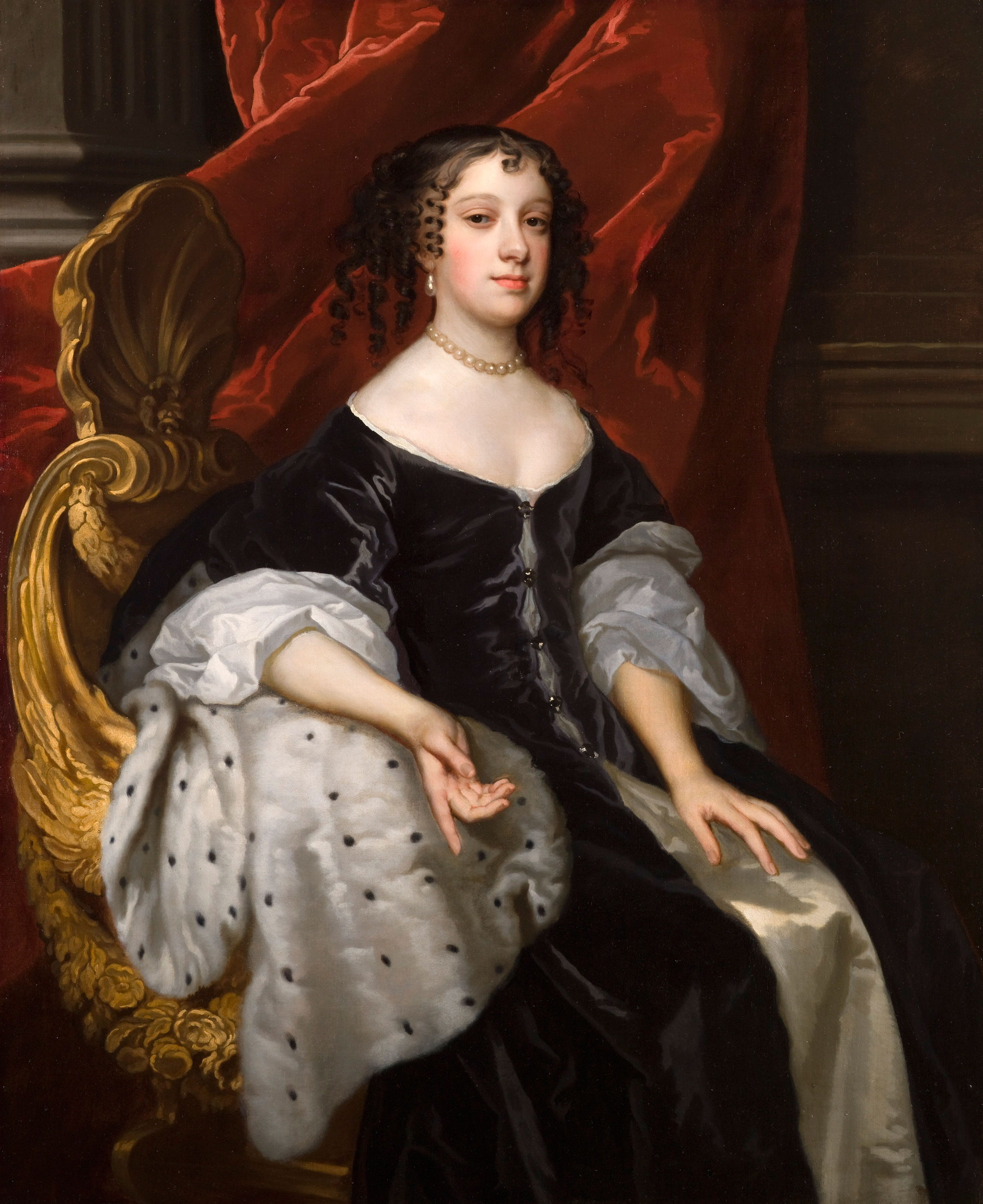|
Mutemwiya
Mutemwiya (also written as Mutemwia, Mutemuya or Mutemweya) was a minor wife of the Eighteenth Dynasty pharaoh Thutmose IV, and the mother of Pharaoh Amenhotep III. Mutemwiya's name means " Mut in the divine barque". While unconfirmed, it has been suggested that she acted as regent during the minority of her son Amenhotep III. Biography Mutemwiya is not attested during the reign of her husband Thutmose IV. She would have been overshadowed at court by the chief queens Nefertari, and later Iaret. Mutemwiya is only shown on the monuments of her son Amenhotep III. While she occasionally was identified by some researchers as a daughter of King Artatama I of Mitanni, no evidence proves that she is the same person, and nothing about her own background is known. There seemed to be evidence that she was not a daughter of Artatama, but this theory has been discarded.O'Connor, David and Cline, Eric H. Amenhotep III: Perspectives on His Reign University of Michigan Press. 2001 ... [...More Info...] [...Related Items...] OR: [Wikipedia] [Google] [Baidu] |
Amenhotep III
Amenhotep III ( egy, jmn-ḥtp(.w), ''Amānəḥūtpū'' , "Amun is Satisfied"; Hellenization, Hellenized as Amenophis III), also known as Amenhotep the Magnificent or Amenhotep the Great, was the ninth pharaoh of the Eighteenth dynasty of Egypt, Eighteenth Dynasty. According to different authors, he ruled Egypt from June 1386 to 1349 BC, or from June 1388 BC to December 1351 BC/1350 BC, after his father Thutmose IV died. Amenhotep was Thutmose's son by a minor wife, Mutemwiya. His reign was a period of unprecedented prosperity and splendour, when Egypt reached the peak of its artistic and international power. When he died in the 38th or 39th year of his reign he was succeeded by his son Amenhotep IV, who later changed his name to Akhenaten. Family and early life Amenhotep was the son of Thutmose IV and his minor wife Mutemwiya. He was born probably around 1401 BC. Later in his life, Amenhotep commissioned the depiction of his divine birth to be displayed at Luxor Temple. Amenh ... [...More Info...] [...Related Items...] OR: [Wikipedia] [Google] [Baidu] |
Yuya
Yuya (sometimes Iouiya, or Yuaa, also known as Yaa, Ya, Yiya, Yayi, Yu, Yuyu, Yaya, Yiay, Yia, and Yuy) was a powerful ancient Egyptian courtier during the Eighteenth Dynasty of Egypt (circa 1390 BC). He was married to Thuya, an Egyptian noblewoman associated with the royal family, who held high offices in the governmental and religious hierarchies. Their daughter, Tiye, became the Great Royal Wife of Amenhotep III. Yuya and Thuya are known to have had a son named Anen, who carried the titles "Chancellor of Lower Egypt", "Second Prophet of Amun", "Sm-priest of Heliopolis", and "Divine Father". They may also have been the parents of Ay,Rice, p.222 an Egyptian courtier active during the reign of Akhenaten, who eventually became pharaoh as ''Kheperkheprure Ay''. There is no conclusive evidence, however, regarding the kinship of Yuya and Ay, although certainly both men came from the town of Akhmim. The tomb of Yuya and Thuya was, until the discovery of Tutankhamun's, one ... [...More Info...] [...Related Items...] OR: [Wikipedia] [Google] [Baidu] |
Thutmose IV
Thutmose IV (sometimes read as Thutmosis or Tuthmosis IV, Thothmes in older history works in Latinized Greek; egy, ḏḥwti.msi(.w) "Thoth is born") was the 8th Pharaoh of the 18th Dynasty of Egypt, who ruled in approximately the 14th century BC. His prenomen or royal name, Menkheperure, means "Established in forms is Re." He was the son of Amenhotep II and Tiaa. Life Thutmose IV was born to Amenhotep II and Tiaa, but was not actually the crown prince and Amenhotep II's chosen successor to the throne. Some scholars speculate that Thutmose ousted his older brother in order to usurp power and then commissioned the Dream Stele in order to justify his unexpected kingship. Thutmose's most celebrated accomplishment was the restoration of the Great Sphinx of Giza and subsequent commission of the Dream Stele. According to Thutmose's account on the Dream Stele, while the young prince was out on a hunting trip, he stopped to rest under the head of the Sphinx, which was buried up t ... [...More Info...] [...Related Items...] OR: [Wikipedia] [Google] [Baidu] |
Akhenaten
Akhenaten (pronounced ), also spelled Echnaton, Akhenaton, ( egy, ꜣḫ-n-jtn ''ʾŪḫə-nə-yātəy'', , meaning "Effective for the Aten"), was an ancient Egyptian pharaoh reigning or 1351–1334 BC, the tenth ruler of the Eighteenth Dynasty. Before the fifth year of his reign, he was known as Amenhotep IV ( egy, jmn-ḥtp, links=no, meaning " Amun is satisfied", Hellenized as ''Amenophis IV''). As a pharaoh, Akhenaten is noted for abandoning Egypt's traditional polytheism and introducing Atenism, or worship centered around Aten. The views of Egyptologists differ as to whether the religious policy was absolutely monotheistic, or whether it was monolatry, syncretistic, or henotheistic. This culture shift away from traditional religion was reversed after his death. Akhenaten's monuments were dismantled and hidden, his statues were destroyed, and his name excluded from lists of rulers compiled by later pharaohs. Traditional religious practice was gradually resto ... [...More Info...] [...Related Items...] OR: [Wikipedia] [Google] [Baidu] |
Eighteenth Dynasty Of Egypt Family Tree ...
As with most ancient Egyptian royal dynasties, the family tree for the Eighteenth Dynasty is complex and unclear. References {{Aristocratic family trees , monarchies 01 18 Family tree A family tree, also called a genealogy or a pedigree chart, is a chart representing family relationships in a conventional tree structure. More detailed family trees, used in medicine and social work, are known as genograms. Representations o ... [...More Info...] [...Related Items...] OR: [Wikipedia] [Google] [Baidu] |
Colossi Of Memnon
The Colossi of Memnon ( ar, el-Colossat, script=Latn, italic=yes or ''es-Salamat'') are two massive stone statues of the Pharaoh Amenhotep III, which stand at the front of the ruined Mortuary Temple of Amenhotep III, the largest temple in the Theban Necropolis. They have stood since 1350 BC, and were well known to ancient Greeks and Romans, as well as early modern travelers and Egyptologists. The statues contain 107 Roman-era inscriptions in Greek and Latin, dated to between AD 20 and 250; many of these inscriptions on the northernmost statue make reference to the Greek mythological king Memnon, whom the statue was then – erroneously – thought to represent. Scholars have debated how the identification of the northern colossus as "Memnon" is connected to the Greek name for the entire Theban Necropolis as the Memnonium. Description The twin statues depict Amenhotep III (fl. 14th century BC) in a seated position, his hands resting on his knees and his gaze facing eastward ... [...More Info...] [...Related Items...] OR: [Wikipedia] [Google] [Baidu] |
Iaret
Iaret was a Great Royal Wife from the middle of the Eighteenth Dynasty of Ancient Egypt. Family laret was the daughter of Amunhotep II and wife of Thutmose IV. The transcription of her name is uncertain; it is written with a single cobra, which has a number of possible readings. Her titles include: King’s Daughter (''s3t-niswt''), Great King’s Daughter (''s3t-niswt-wrt''), King’s Sister (''snt-niswt''), and Great King’s Wife (''hmt-niswt-wrt''). There are no known children for Queen Iaret.Dodson, Hilton, The Complete Royal Families of Ancient Egypt, 2004 Life Iaret was the second great royal wife from the reign of Thutmose IV. Queen Nefertari is shown in inscriptions dating to the earlier part of the reign. A secondary wife of Thutmose IV by the name of Mutemwiya was the mother to the heir of the throne. Iaret is depicted on a Year 7 stela of Thutmose IV from Konosso. The stela depicts Thutmose smiting enemies before the Nubian gods Dedwen and Ha. Queen Iaret ... [...More Info...] [...Related Items...] OR: [Wikipedia] [Google] [Baidu] |
Artatama I
Artatama I was a king of the Hurrian kingdom of Mitanni in the late fifteenth century BC. His reign coincided with the reigns of Egyptian pharaohs Amenhotep II and Thutmose IV. He is believed to be the son of earlier Mitanni king Shaushtatar. A tablet of Artatama was found at Tall Bazi granting land. Tablets were also found at Alalakh. Artatama is referred to in the Amarna letters (EA 29) as the grandfather of Tushratta and father of Shuttarna II, who established an alliance with Thutmose IV of Ancient Egypt. Facing the perils of fighting a war on two fronts, the Hittites in the north and Egypt in the south, Artatama approached Amenhotep II with an offer of peaceful division of contested lands in Syria. A peaceful resolution of an old conflict could grow into a political and military alliance, but the Egyptians suspected foul play and denied definite answer for years. At one point during the reign of Thutmose IV they proposed a marriage between Thutmose and Artatama's daughter, ... [...More Info...] [...Related Items...] OR: [Wikipedia] [Google] [Baidu] |
Isis
Isis (; ''Ēse''; ; Meroitic language, Meroitic: ''Wos''[''a''] or ''Wusa''; Phoenician language, Phoenician: 𐤀𐤎, romanized: ʾs) was a major ancient Egyptian deities, goddess in ancient Egyptian religion whose worship spread throughout the Greco-Roman world. Isis was first mentioned in the Old Kingdom () as one of the main characters of the Osiris myth, in which she resurrects her slain brother and husband, the divine king Osiris, and produces and protects his heir, Horus. She was believed to help the dead enter the ancient Egyptian afterlife beliefs, afterlife as she had helped Osiris, and she was considered the divine mother of the pharaoh, who was likened to Horus. Her maternal aid was invoked in healing Spell (paranormal), spells to benefit ordinary people. Originally, she played a limited role in royal rituals and Egyptian temple, temple rites, although she was more prominent in ancient Egyptian burial customs, funerary practices and magical texts. She was usually ... [...More Info...] [...Related Items...] OR: [Wikipedia] [Google] [Baidu] |
15th-century BC Egyptian Women
The 15th century was the century which spans the Julian dates from 1 January 1401 ( MCDI) to 31 December 1500 ( MD). In Europe, the 15th century includes parts of the Late Middle Ages, the Early Renaissance, and the early modern period. Many technological, social and cultural developments of the 15th century can in retrospect be seen as heralding the " European miracle" of the following centuries. The architectural perspective, and the modern fields which are known today as banking and accounting were founded in Italy. The Hundred Years' War ended with a decisive French victory over the English in the Battle of Castillon. Financial troubles in England following the conflict resulted in the Wars of the Roses, a series of dynastic wars for the throne of England. The conflicts ended with the defeat of Richard III by Henry VII at the Battle of Bosworth Field, establishing the Tudor dynasty in the later part of the century. Constantinople, known as the capital of the world a ... [...More Info...] [...Related Items...] OR: [Wikipedia] [Google] [Baidu] |
Queens Consort Of The Eighteenth Dynasty Of Egypt
Queens is a borough of New York City, coextensive with Queens County, in the U.S. state of New York. Located on Long Island, it is the largest New York City borough by area. It is bordered by the borough of Brooklyn at the western tip of Long Island to its west, and Nassau County to its east. Queens also shares water borders with the boroughs of Manhattan, the Bronx, and Staten Island (via the Rockaways). With a population of 2,405,464 as of the 2020 census, Queens is the second most populous county in the State of New York, behind Kings County (Brooklyn), and is therefore also the second most populous of the five New York City boroughs. If Queens became a city, it would rank as the fifth most-populous in the U.S. after New York City, Los Angeles, Chicago, and Houston. Approximately 47% of the residents of Queens are foreign-born. Queens is the most linguistically diverse place on Earth and is one of the most ethnically diverse counties in the United States. Queens was esta ... [...More Info...] [...Related Items...] OR: [Wikipedia] [Google] [Baidu] |
Malkata
Malkata (or Malqata; ar, الملقطة, lit=the place where things are picked up), is the site of an Ancient Egyptian palace complex built during the New Kingdom, by the 18th Dynasty pharaoh Amenhotep III. It is located on the West Bank of the Nile at Thebes, Upper Egypt, in the desert to the south of Medinet Habu. The site also included a temple dedicated to Amenhotep III's Great Royal Wife, Tiy, which honors Sobek, the crocodile deity. Palace of Amenhotep III There are various structures in the desert, consisting of several residential palaces, a temple of Amun, a festival hall, elite villas, houses for the relatives of the royal family, apartments for attendants, and a desert altar termed the ''Kom al-Samak'', all of which were constructed of mud bricks. The palace was built in the 14th century BC and its ancient name was '' Per-Hay'', "House of Rejoicing". Originally, the palace was known as ''the Palace of the Dazzling Aten''. Built mostly out of mud-brick, it wa ... [...More Info...] [...Related Items...] OR: [Wikipedia] [Google] [Baidu] |









